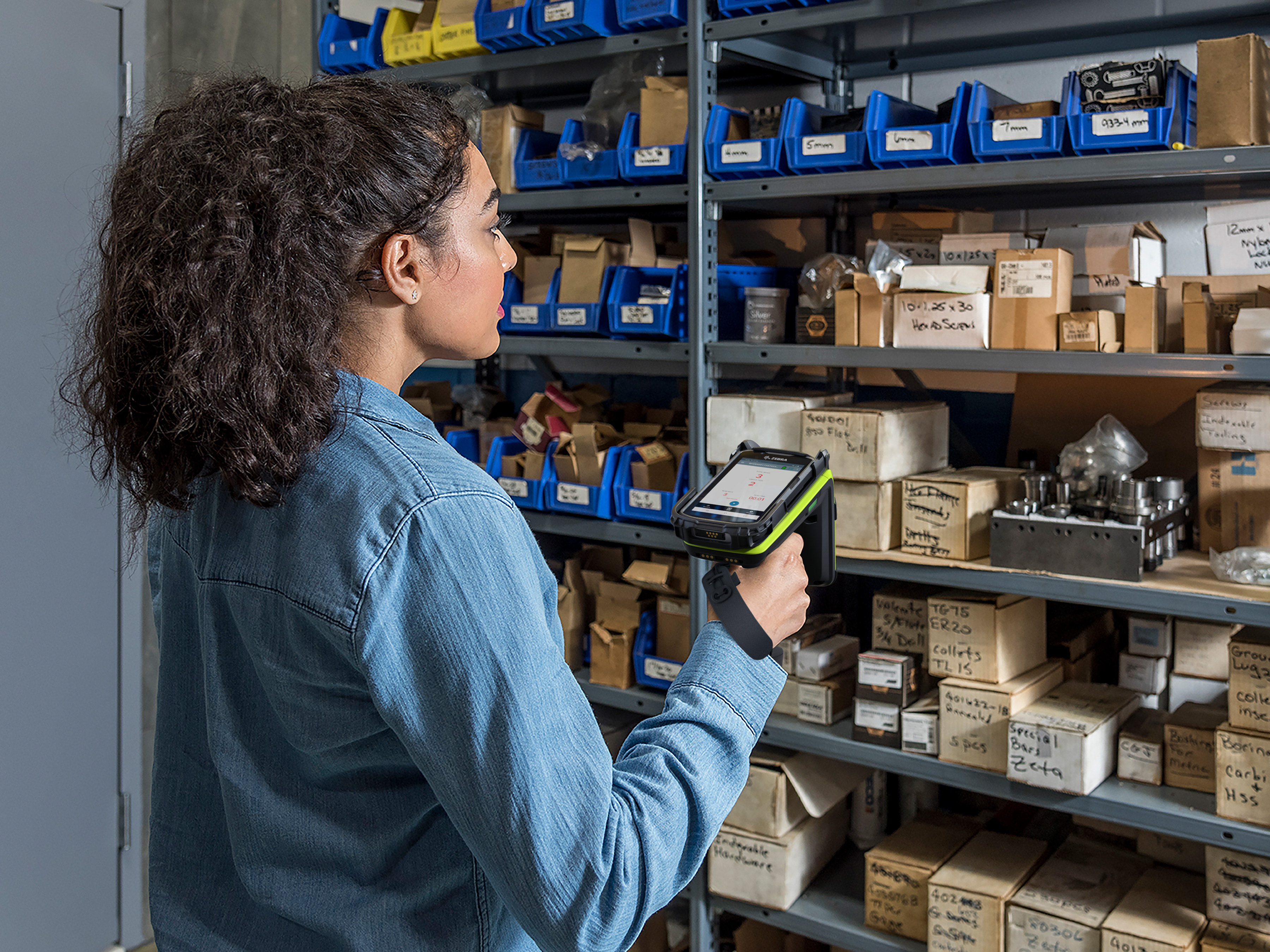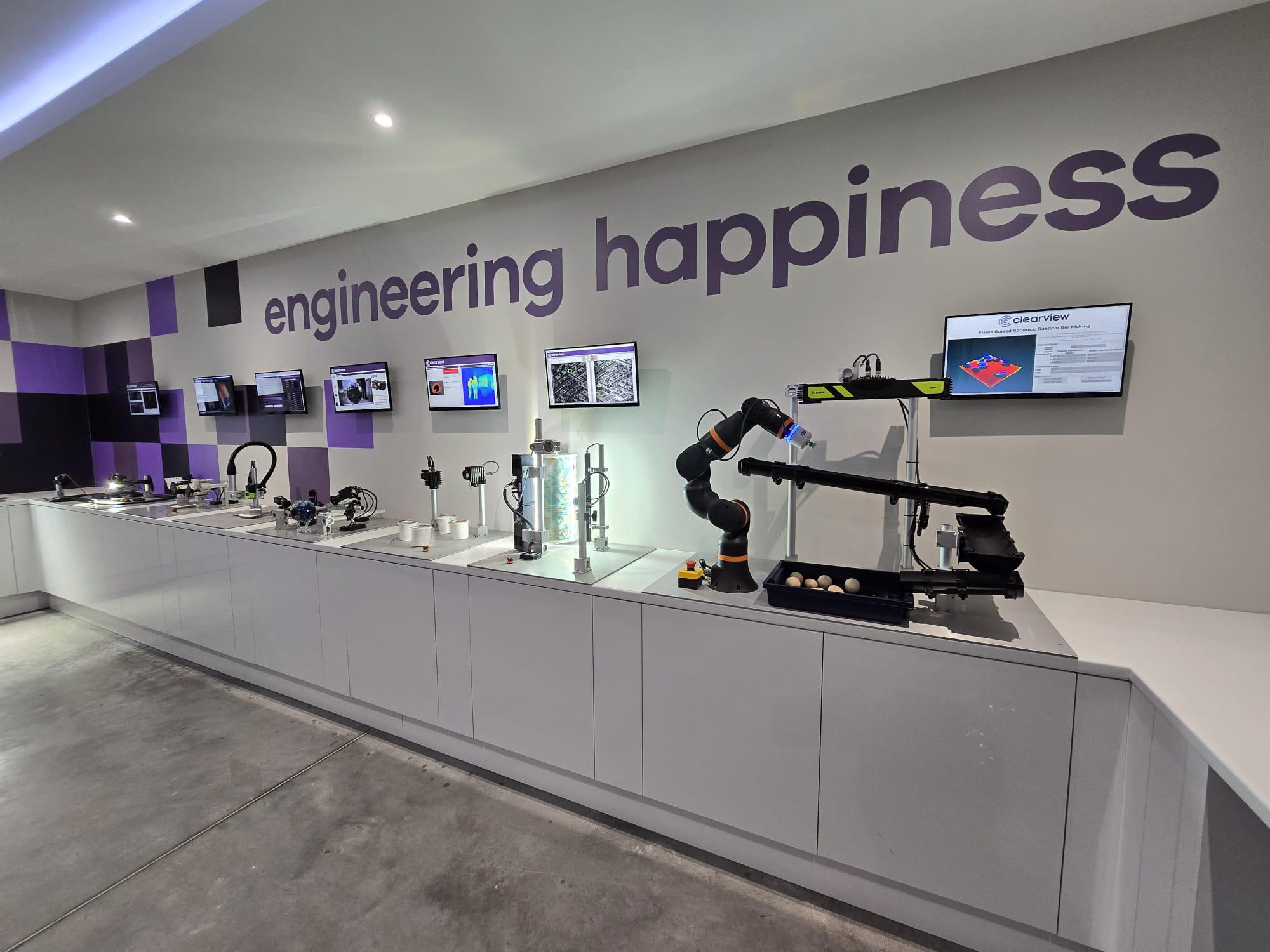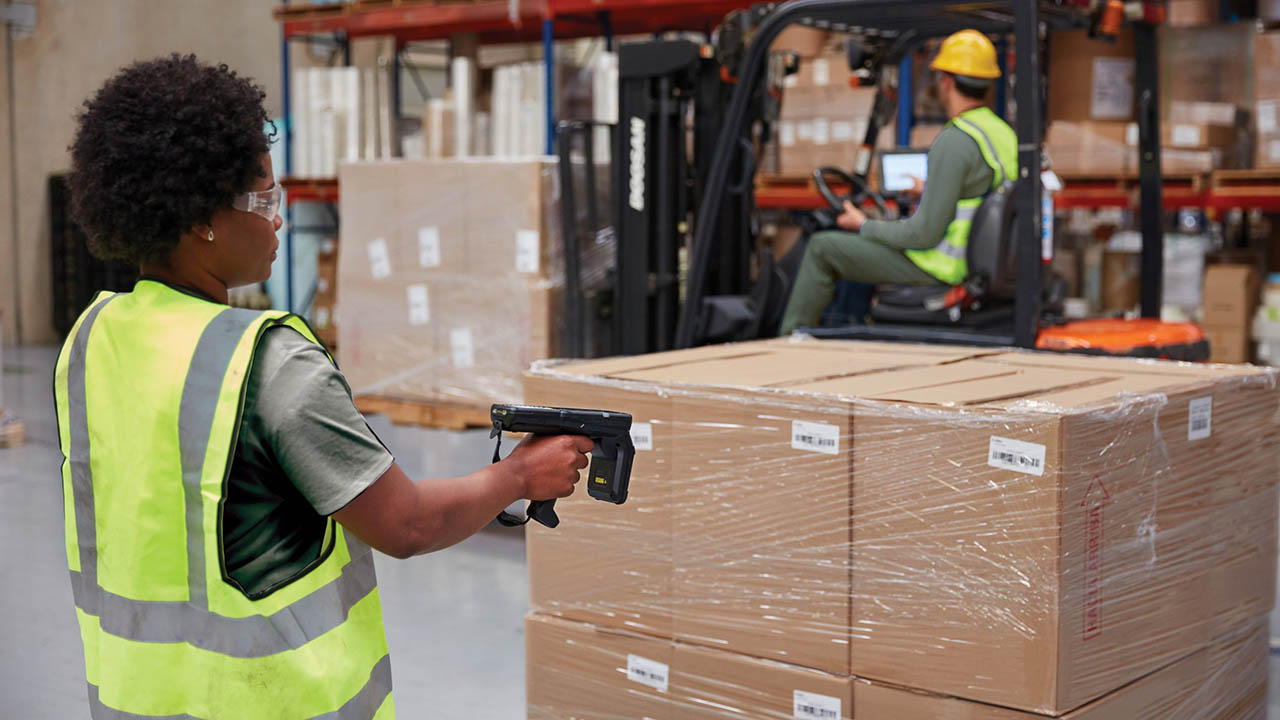Transform retail operations with Zebra’s retail technology solutions, featuring hardware and software for improving inventory management and empowering teams.
Streamline operations with Zebra’s healthcare technology solutions, featuring hardware and software to improve staff collaboration and optimize workflows.
Enhance processes with Zebra’s manufacturing technology solutions, featuring hardware and software for automation, data analysis, and factory connectivity.
Zebra’s transportation and logistics technology solutions feature hardware and software for enhancing route planning, visibility, and automating processes.
Learn how Zebra's public sector technology solutions empower state and local governments to improve efficiency with asset tracking and data capture devices.
Zebra's hospitality technology solutions equip your hotel and restaurant staff to deliver superior customer and guest service through inventory tracking and more.
Zebra's market-leading solutions and products improve customer satisfaction with a lower cost per interaction by keeping service representatives connected with colleagues, customers, management and the tools they use to satisfy customers across the supply chain.
Empower your field workers with purpose-driven mobile technology solutions to help them capture and share critical data in any environment.
Zebra's range of Banking technology solutions enables banks to minimize costs and to increase revenue throughout their branch network. Learn more.
Zebra's range of mobile computers equip your workforce with the devices they need from handhelds and tablets to wearables and vehicle-mounted computers.
Zebra's desktop, mobile, industrial, and portable printers for barcode labels, receipts, RFID tags and cards give you smarter ways to track and manage assets.
Zebra's 1D and 2D corded and cordless barcode scanners anticipate any scanning challenge in a variety of environments, whether retail, healthcare, T&L or manufacturing.
Zebra's extensive range of RAIN RFID readers, antennas, and printers give you consistent and accurate tracking.
Choose Zebra's reliable barcode, RFID and card supplies carefully selected to ensure high performance, print quality, durability and readability.
Zebra's location technologies provide real-time tracking for your organization to better manage and optimize your critical assets and create more efficient workflows.
Zebra's rugged tablets and 2-in-1 laptops are thin and lightweight, yet rugged to work wherever you do on familiar and easy-to-use Windows or Android OS.
With Zebra's family of fixed industrial scanners and machine vision technologies, you can tailor your solutions to your environment and applications.
Zebra’s line of kiosks can meet any self-service or digital signage need, from checking prices and stock on an in-aisle store kiosk to fully-featured kiosks that can be deployed on the wall, counter, desktop or floor in a retail store, hotel, airport check-in gate, physician’s office, local government office and more.
Adapt to market shifts, enhance worker productivity and secure long-term growth with AMRs. Deploy, redeploy and optimize autonomous mobile robots with ease.
Discover Zebra’s range of accessories from chargers, communication cables to cases to help you customize your mobile device for optimal efficiency.
Zebra's environmental sensors monitor temperature-sensitive products, offering data insights on environmental conditions across industry applications.
Enhance frontline operations with Zebra’s AI software solutions, which optimize workflows, streamline processes, and simplify tasks for improved business outcomes.
Zebra Workcloud, enterprise software solutions boost efficiency, cut costs, improve inventory management, simplify communication and optimize resources.
Keep labor costs low, your talent happy and your organization compliant. Create an agile operation that can navigate unexpected schedule changes and customer demand to drive sales, satisfy customers and improve your bottom line.
Drive successful enterprise collaboration with prioritized task notifications and improved communication capabilities for easier team collaboration.
Get full visibility of your inventory and automatically pinpoint leaks across all channels.
Reduce uncertainty when you anticipate market volatility. Predict, plan and stay agile to align inventory with shifting demand.
Drive down costs while driving up employee, security, and network performance with software designed to enhance Zebra's wireless infrastructure and mobile solutions.
Explore Zebra’s printer software to integrate, manage and monitor printers easily, maximizing IT resources and minimizing down time.
Make the most of every stage of your scanning journey from deployment to optimization. Zebra's barcode scanner software lets you keep devices current and adapt them to your business needs for a stronger ROI across the full lifecycle.
RFID development, demonstration and production software and utilities help you build and manage your RFID deployments more efficiently.
RFID development, demonstration and production software and utilities help you build and manage your RFID deployments more efficiently.
Zebra DNA is the industry’s broadest suite of enterprise software that delivers an ideal experience for all during the entire lifetime of every Zebra device.
Advance your digital transformation and execute your strategic plans with the help of the right location and tracking technology.
Boost warehouse and manufacturing operations with Symmetry, an AMR software for fleet management of Autonomous Mobile Robots and streamlined automation workflows.
The Zebra Aurora suite of machine vision software enables users to solve their track-and-trace, vision inspection and industrial automation needs.
Zebra Aurora Focus brings a new level of simplicity to controlling enterprise-wide manufacturing and logistics automation solutions. With this powerful interface, it’s easy to set up, deploy and run Zebra’s Fixed Industrial Scanners and Machine Vision Smart Cameras, eliminating the need for different tools and reducing training and deployment time.
Aurora Imaging Library™, formerly Matrox Imaging Library, machine-vision software development kit (SDK) has a deep collection of tools for image capture, processing, analysis, annotation, display, and archiving. Code-level customization starts here.
Aurora Design Assistant™, formerly Matrox Design Assistant, integrated development environment (IDE) is a flowchart-based platform for building machine vision applications, with templates to speed up development and bring solutions online quicker.
Designed for experienced programmers proficient in vision applications, Aurora Vision Library provides the same sophisticated functionality as our Aurora Vision Studio software but presented in programming language.
Aurora Vision Studio, an image processing software for machine & computer vision engineers, allows quick creation, integration & monitoring of powerful OEM vision applications.
Adding innovative tech is critical to your success, but it can be complex and disruptive. Professional Services help you accelerate adoption, and maximize productivity without affecting your workflows, business processes and finances.
Zebra's Managed Service delivers worry-free device management to ensure ultimate uptime for your Zebra Mobile Computers and Printers via dedicated experts.
Find ways you can contact Zebra Technologies’ Support, including Email and Chat, ask a technical question or initiate a Repair Request.
Zebra's Circular Economy Program helps you manage today’s challenges and plan for tomorrow with smart solutions that are good for your budget and the environment.
The Zebra Knowledge Center provides learning expertise that can be tailored to meet the specific needs of your environment.
Zebra has a wide variety of courses to train you and your staff, ranging from scheduled sessions to remote offerings as well as custom tailored to your specific needs.
Build your reputation with Zebra's certification offerings. Zebra offers a variety of options that can help you progress your career path forward.
Build your reputation with Zebra's certification offerings. Zebra offers a variety of options that can help you progress your career path forward.

SAP Mobile Advisor: Choosing Your Future WMS for SAP S/4HANA: Extended Warehouse Management vs. Stock Room Management
Which option is better to support your frontline workers and improve the efficiency of digital workflows?
Editor’s Note: This post is part of the “SAP Mobile Advisor” series now hosted on Zebra’s Your Edge blog and podcast channels. If you missed previous posts, you can catch up here:
- This is Why You Must Put Your Workers’ Mobile Experiences First When Modernizing Your SAP Warehouse
- How to Enable Offline Workflows and Transactions with SAP Mobile Apps
- There’s a New Alternative to Legacy SAP Mobile Solutions That You May Want to Look Into
###
As I talk to many SAP customers looking to migrate from SAP ECC to SAP S/4HANA to better support frontline workers and back-office processes, a key question often arises:
Should I choose SAP Extended Warehouse Management (EWM) or Stock Room Management (SRM)?
Ultimately, the best option for your business depends on how complex your warehouse and inventory management needs are and whether you truly need the added capabilities of EWM at the added cost of an additional software license.
You must also consider the mobile worker experience. Will the SAP platform you choose be able to fully support the people on the frontlines? Will you be able to create the mobile app – or, really, the user experience – they need to be efficient and effective in high-pressure situations? Will they have the tools needed to capture data at the edge using a wearable, handheld mobile computer, tablet, or barcode scanner? And will that data be able to flow back into SAP and then on to your other business systems for reconciliation and actioning? Will you be able to automate your workflows with ease as the pressure (and business case) compels such changes?
Well, the truth is EWM and SRM are both SAP warehouse management systems (WMS) that can help you manage your warehouse operations and inventory. They’re designed to replace SAP’s older Warehouse Management (WM) solution. However, in some cases, EWM require a separate license, while SRM is included with your subscription to SAP S/4 HANA.
So, technically, both platforms could give you the capabilities you need to facilitate the connection you need between frontline workers and back-office systems. However, the best option for you will depend on your operation size, complexity, and future growth ambitions.
So, let’s talk about that more. Let’s also think about what you will have to do to effectively migrate to either EWM or SRM, depending on which option ends up being best for you.
Before we do that, though, let me just answer one question I have been hearing more lately:
“Is it true that SAP S/4HANA users need to use either EWM or SRM? That we can’t ‘opt out’ of this migration?”
The short answer is, “yes.”
If you’re moving from SAP’s ERP Central Component (ECC) to SAP S/4HANA, and you’re using a WMS that relies on ECC’s database, then you’ll have to migrate your warehouse management application and your current database to SAP S/4HANA.
Why? (The most important question.)
If you’re using SAP’s WM platform, or any other third-party database or WMS that doesn’t use the SAP HANA database, then you won’t be able to use those platforms or databases with SAP S/4HANA. Long-term, you’ll have to migrate to the HANA database and to warehouse management solutions that are compatible with SAP S/4HANA.
If you’re using SAP WM, you can continue to run your existing solution in S/4HANA for a limited time by using a compatibility mode. However, you can only do that until December 31, 2025, which is when SAP will suspend the usage of any components in compatibility mode.
If you intend to use an SAP WMS with SAP S/4HANA, then you’ll need to migrate to SAP’s EWM or SRM and use one of those platforms with S/4HANA.
What’s the Difference Between SAP EWM and SRM?
SAP SRM is a simplified version of SAP WM for smaller or less complex warehouse operations. It offers a core feature set focused on standard inventory management, inbound processing, outbound processing, mobile execution, internal warehouse movement, physical inventory, and reporting.
SAP EWM is a comprehensive warehouse management platform for more complex warehouse operations and especially for those managing high volumes of finished goods. It’s typically the right fit if you need to map your warehouse and manage and control inventory by segments and storage locations down to a storage bin level, and potentially to deeper levels within those same bins. It allows you to see the total quantity of a product in your warehouse and its exact location at any time.
This makes EWM a great option for busy, high-volume, finished-goods warehouse operations, but it can be overkill for much simpler warehouse operations with less complex needs. This is why SAP developed SRM as a simpler and flexible alternative.
SRM is essentially a version of SAP WM with some of the more complex features and functionality removed. The benefit of SRM here is that it does not require additional licensing as it comes with S4HANA Core.
Here is a quick overview of the core capabilities that SRM provides:
· Inventory management by:
o Storage bin
o Storage unit
o Batch
o Stock status
o Stock attributes
· Inbound receiving and put-away by:
o Vendors
o Production
o Other business units
o Customer returns
· Outbound picking and processing for:
o External customers
o Internal customers
o Production supply
o Vendor returns
· Transfers, replenishment, and internal movement
- Mobile execution via barcodes, RFID and mobile computing
· Physical inventory and reconciliation, including:
o Cycle counts
o Continuous counts
o Annual counts
· Reports that include:
o Stock levels
o Bin information
o Open and confirmed transfer orders
o Transfer requirements
· Low-complexity migration from SAP WM
The above capabilities offer virtually everything that many smaller or less complex warehouse operations need in a WMS and is a great tool for lean processes and bin-level inventory management. You would have all the features and functionality you need to manage inventory and transactions, optimize processes, and implement strategies for more efficient and accurate operations.
However, there are some more complex capabilities that were available in SAP WM but are now available only in EWM. So, if you are using anything from this list right now or might need to in the future, you should probably consider EWM:
· Task and resource management (WM-TRM)
· Cross docking (WM-CD)
· Wave picking and management (WM-TFM-CP)
· Yard management (WM-YM)
· Warehouse control unit interface (WM-LSR)
· Value-added services (WM-VAS)
· Decentralized warehouse management (WM-DWM)
In other words, SRM isn’t an ideal option if you need to map and set up more complex storage facilities and areas with various storage types within those areas and process-oriented storage control. It’s also not an option if you need a solution that can support wave picking, cross-docking, yard management, or labor management with rule-based task bundling. So, plan to migrate to EWM.
If you don’t need these capabilities, then SRM should work great for you.
If you need a more detailed comparison of SRM vs. EWM, see the SAP Community Blog Stock Room Management Comparison with EWM.
Are There Risks in Migrating to SAP SRM?
SRM will provide the core functions that you need and offers a relatively simple migration path from SAP Warehouse Management, with low complexity.
However, SAP is not planning any future development for SRM, so you won’t see future innovations or improvements for this solution. Nonetheless, SRM is a stable and proven WMS that can serve you well into the future.
SAP’s decision to end new development for SRM doesn’t mean that there’s any reason to worry. For example, SAP Inventory Management and WM have been virtually unchanged for 32 years, yet they’re still widely used in warehousing environments.
If your warehouse processes aren’t complex enough to justify EWM, and SRM will support your needs and continue to do so in the years ahead, you can keep things simple and save costs by simply migrating to SRM.
Nonetheless, if you’re concerned that your warehouse processes and inventory management needs might become more complex in the foreseeable future, and you’re not sure if SRM can support those requirements, then take a closer look at EWM. You can start by reviewing the SRM vs. EWM comparison table above.
Now, there’s another question I often hear when talking with business leaders about the switch to a new WMS...
“Do I need to upgrade or update my SAP mobile apps and mobile hardware to use SRM or EWM?”
The short answer is: “It depends on which WMS you choose.”
However, you will need to migrate and update the apps either way as they will be connecting to SAP S4/HANA instead of SAP ECC. But consider this an opportunity to optimize and improve your mobile warehouse processes and upgrade to higher-performance and future-forward mobile hardware while you’re moving to S/4HANA.
We highly recommend that you get familiar with the SAPUI5 platform and look for opportunities to use it to optimize and mobilize your warehouse processes while you’re making the switch to S4/HANA. To learn more about what’s possible with SAPUI5 and how to use it to optimize your mobile processes, read my recent post about, putting mobile experiences first when modernizing your SAP warehouse.
Your migration to SRM or EWM is also an ideal opportunity to look at upgrading to new ruggedized, purpose-built mobile devices for your frontline workers. Ultimately, as you move to SRM or EWM, you’re making a significant investment in optimizing your systems for the next 20 years, and it’s been my experience that aligning your software and hardware provides the best user experience and minimizes future change management requirements.
Again, to learn more about some of the best ways to do this, check out that blog post I just mentioned. I’m also happy to talk to you one-on-one about the differences between SRM and EWM and what it would take for you to migrate or develop new SAP mobile apps to ensure proper workflow and information flow digitalization. As someone working on the frontlines of SAP warehouse management, mobile app development, and process optimization every day, I’m always happy to answer questions, provide guidance, and help you make an informed decision.
Zebra Developer Blog
Zebra Developer BlogZebra Developer Blog
Are you a Zebra Developer? Find more technical discussions on our Developer Portal blog.
Zebra Story Hub
Zebra Story HubZebra Story Hub
Looking for more expert insights? Visit the Zebra Story Hub for more interviews, news, and industry trend analysis.
Search the Blog
Search the BlogSearch the Blog
Use the below link to search all of our blog posts.
Most Recent
Legal Terms of Use Privacy Policy Supply Chain Transparency
ZEBRA and the stylized Zebra head are trademarks of Zebra Technologies Corp., registered in many jurisdictions worldwide. All other trademarks are the property of their respective owners. ©2025 Zebra Technologies Corp. and/or its affiliates.






